If you’re heading toward Delphi and love Byzantine architecture and art, the UNESCO-listed Hosios (or Osios) Loukas Monastery in Beotia is a must-visit site. I recently visited this stunning monastic complex (I was actually on a hiking trip to nearby Kleisoura gorge) and the moment I arrived I was overwhelmed with awe and admiration by the exquisite beauty of the buildings and the magnificent frescoes.
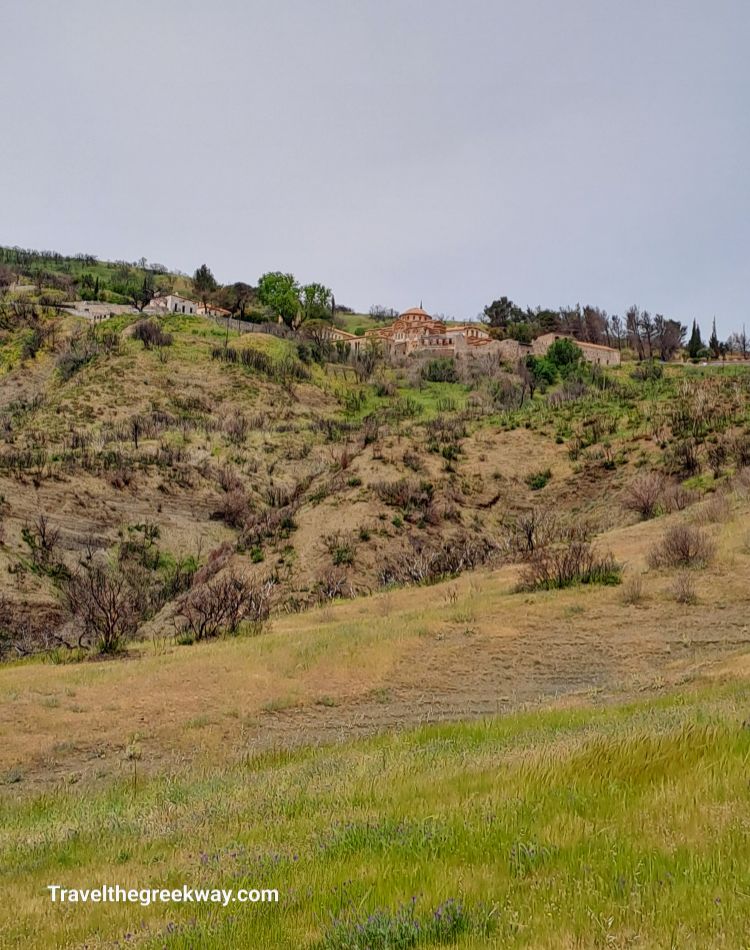
The Eastern Orthodox monastery is built in a beautiful and remote area of Greece on Elikonas Mountain slopes near Parnassus Mountain, retaining its authentic and spiritual atmosphere. Inside the fortified monument, you will visit the magnificent Byzantine churches from the 11th century, imperial structures that are preserved in excellent condition.
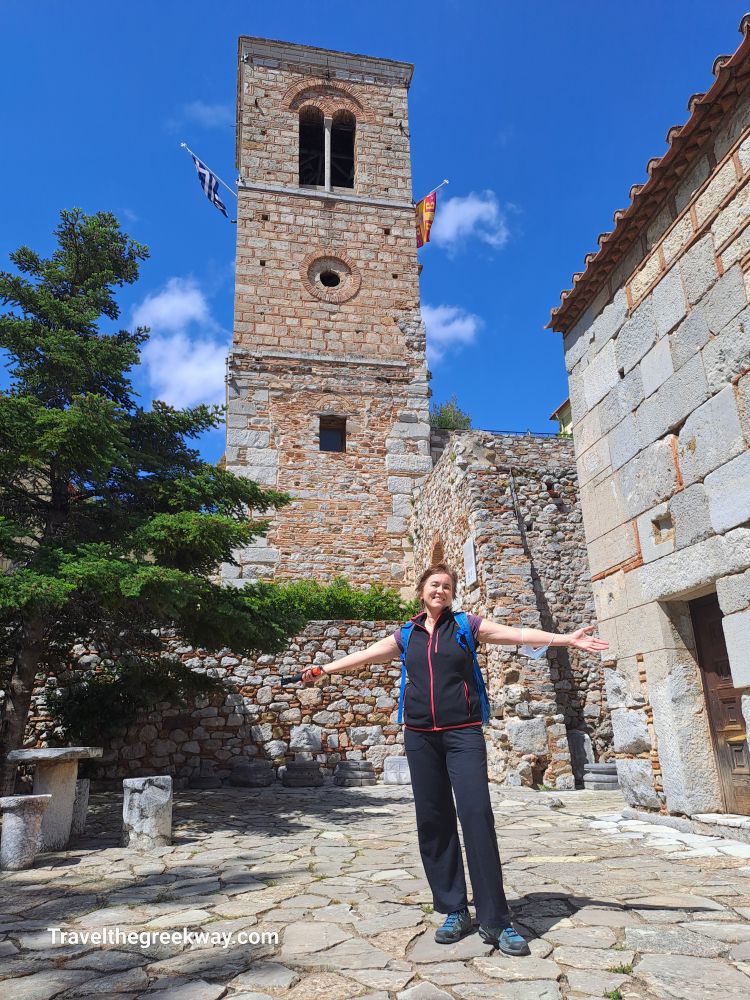
The monastery also includes other amazing buildings such as two-story and three-story cells, the Refectory, an underground cistern, a bell tower, the older church of Panagia, Agia Varvara crypt where Osios Loukas tomb lies, and other auxiliary buildings.
*Some of the links below are affiliate links. This means I may earn a commission if you click and make a purchase, at no extra cost to you.
My Latest Video on Hosios Loukas
The monastery is 36 km northeast of Delphi and Arachova town. So in one visit, you can combine two spectacular UNESCO Greek historical sites: an ancient and a Byzantine one!
Who Was Hosios Loukas?
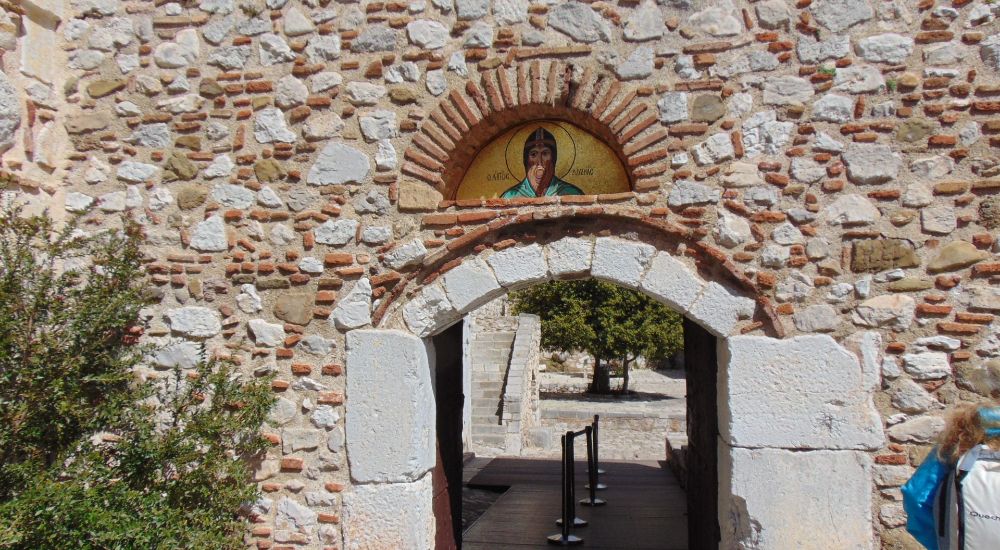
Whatever we know today about Hosios Loukas, comes from the works of an anonymous author in 962, first published in 1874 in “Phocika,” by the historian G. Kremos. According to the biography, Hosios Loukas spent the last seven years of his life (946-953) in ascetic practice here.
Born in Kastrí, Phocis in Beotia in 896 to refugee parents from Aegina, Loukas embraced monastic life early. By 910 or 911, he was a monk in Athens, later moving to various hermitages in Phocis and the Corinthian coast, always staying one step ahead of Symeon’s Bulgarians. In 946/947, he finally settled in the location of the present monastery, where he passed away in 953.

Hosios Loukas was a beloved figure in the local community known for his charitable work, healing skills, and prophecy abilities. In 941, he famously predicted the recapture of Crete by General Nikiphoros Phokas during the reign of Romanos II in 961, saying, “Romanos will conquer Crete.” His incredible abilities and enduring reputation turned the area into a popular pilgrimage site.
The Holy remains of Hosios Loukas, which were moved to the Vatican by the Crusaders in the 13th century, were finally found in Venice, and on the 13th of December 1986, they were returned to the reliquary of Catholikon.
History of Osios Loukas Monastery

The monastery of Hosiοs Loukas is one of the largest and most significant monuments of the Middle-Byzantine Period. Hosios Loukas built a beautiful church that is more like a crypt that you can visit dedicated to Agia (Saint) Barbara. After he died, the Church of Theotokos was constructed as the first and most intricate example of the cross-in-square complex four-columned design in Greece.
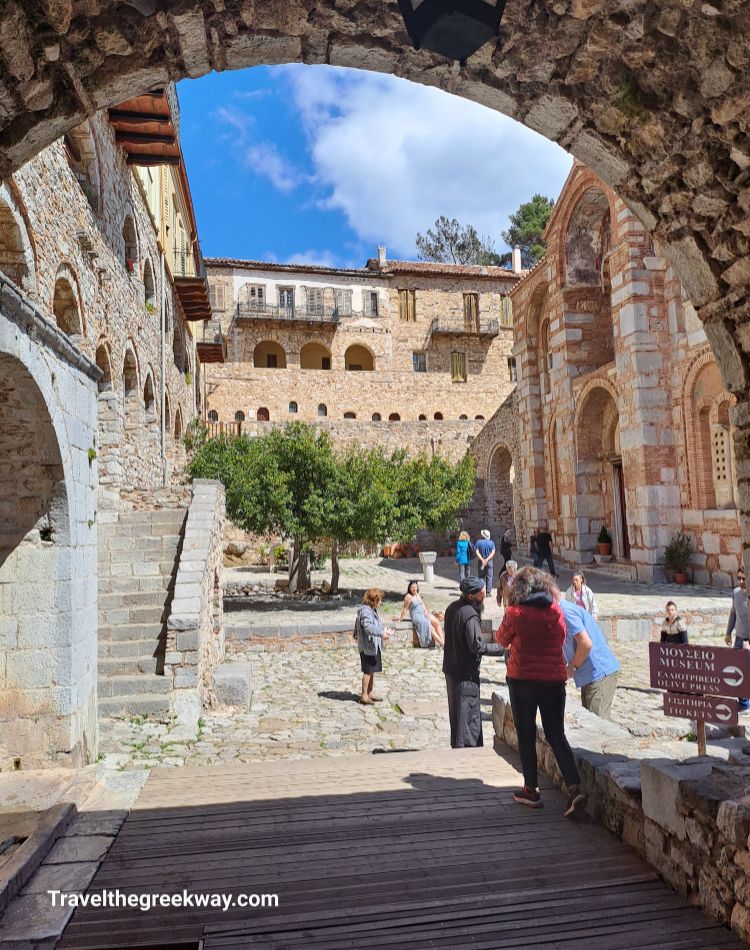
In 1011, the Catholicon, the main church of the monastery and dedicated to Hosios Loukas, was built next to the Church of Theotokos, incorporating part of the existing structure to house the Saint’s miraculous relics, which still draw many pilgrims today. The two churches are connected through a passage.

The monastery was originally fortified, but now only a few remnants of its enclosure wall remain. Today, the complex includes many auxiliary buildings and cells adjacent to the two churches. Some structures date back to the 11th century, like the restored refectory, which has housed an interesting collection of Byzantine sculptures since 1993.

Over its long history, the monastery has faced significant damage and looting, including during WWII. Conservation efforts began in 1938 and continue today. Since 1990, this remarkable site has been recognized as a UNESCO cultural heritage site.
Byzantine Architecture
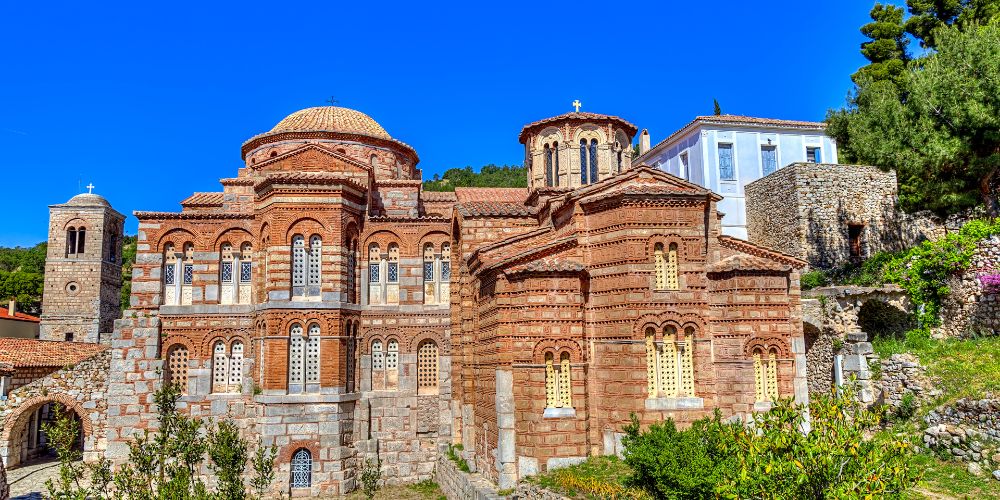
The Catholicon church, designed as a Greek-cross domed octagon with a large dome supported by eight huge pillars, became the model for future churches of this style in Greece.
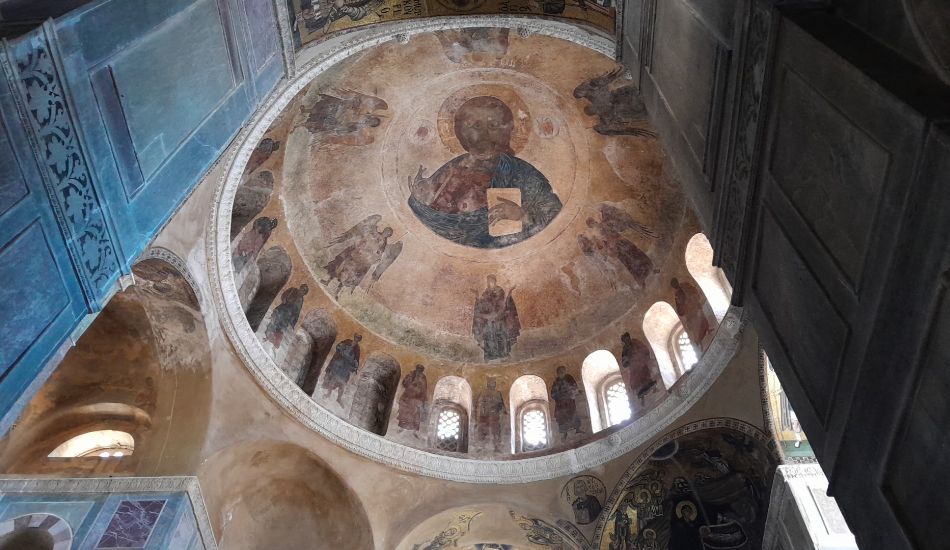
The masonry is a mix of bricks, stones, and marbles arranged in alternating horizontal bands. The marbles come from the ruins of ancient buildings, primarily temples. The exterior walls are left unplastered and are not adorned with ceramics.
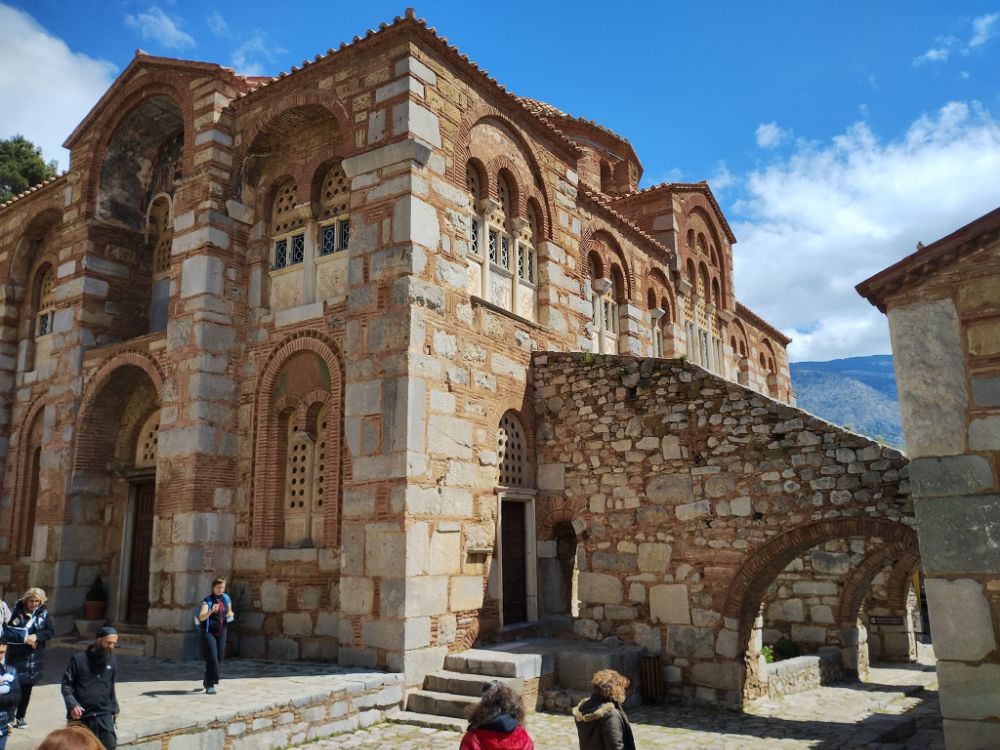
The interior is particularly impressive due to its luxurious decorations. The particularly tall (5.5 m height) and large dome has a diameter of 8.98 m with 16 windows and is covered with tiles, as is the roof of the church. At the edges, the church has marble gutters.
Byzantine Art in Hosios Loukas Monastery

The impact of Crete’s reoccupation (after 961) is evident in the earliest wall painting of the Monastery, dating back to the late 10th century. This artwork adorns the western wall of the narthex in the Church of Theotokos, depicting Archangel Michael appearing to Joshua, the leader of the Jews, just before the fall of Jericho.

The floors and lower walls are covered in colorful marble, while the upper walls showcase amazing mosaics, great examples of Byzantine art. The holy figures in these 11th-century mosaics stand out for their unique, abstract style.

The religious scenes are carefully chosen and crafted, following strict rules that artists still stick to today. But I don’t think Byzantine art is all about rigidness and stillness. These artists were deeply inspired by ancient art, capturing its harmonious proportions and elegance.
Byzantine art is unique in Europe because it began at the end of antiquity and lasted until the Renaissance, bridging the ancient world with modern history.
The Buildings of the Monastery

There are various areas where you have full access, such as the churches, the Agia Varvara crypt containing Hosios Loukas’ tomb, the exhibition rooms on the upper floor with monk cells and photographs, as well as small shops offering memorabilia and religious items.

Additionally, there is a vast courtyard where you can enjoy beautiful views of Mount Elikonas.

There is a museum that I suggest you visit with a small entrance ticket. There are also quite a few other facilities that you are either not allowed (monk cells) or are currently under restoration works. The most important buildings are:

- The Catholicon Church dedicated to Hosios Loukas.
- The Theotokos Church.
- The Crypt of Agia Varvara with Hosios Loukas’ tomb.
- The Vordonareio (stable) houses 18th-century detached frescoes from the Church of Saint Spyridon.
- The Fotanamma with its distinctive chimney.
- The Northern Stoas serve as exhibition rooms.
- and the Refectory, which has been functioning as a museum since 1993.
Osios Loukas Monastery Visitor Information
The Monastery is open daily between 8.30-15.30. Just to be on the safe side, especially if you are planning to visit just the monastery, give them a call at +30 22670 22797 to check if for some reason the monastery is closed.

As in every monastery in Greece, you have to wear modest clothes to visit it. I suggest you wear long pants and cover your shoulders, a simple T-shirt will make do. You will also need comfortable walking shoes and a hat.
There is a small shop where you can buy water and snacks. You can take your water with you but snacks should be consumed outside of the monastery in the yard with the beautiful mountain views.
Day trip to Hosios Loukas Monastery from Athens
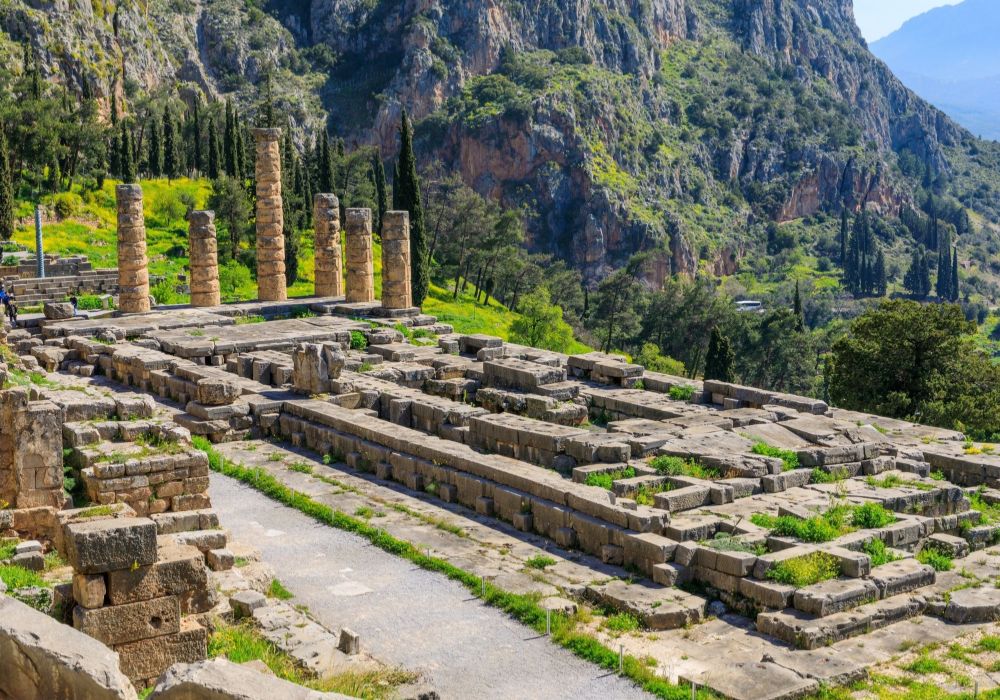
If you love driving then I recommend you rent a car and enjoy the scenery from Athens to the Monastery and Delphi. However, if you do not feel confident about driving or you prefer to relax and leave the task to someone else then you should book this great Delphi & Hosios Loukas Full Day Private Tour.
It has full pick up and drop off from your hotel, stopping at Hosios Loukas, Delphi, and Arachova town and you can book it here.
FAQ
Accommodation Near the Monastery
I presume that you are visiting Osios Loukas on your way to Delphi. If this is so, it makes sense to stay overnight near Delphi or Arachova or by the seafront Itea town.
These are picturesque areas that offer a glimpse of authentic Greece. Here are three of my favorite hotels, mid-range in price and family-friendly:
Paeonia Arachova Hotel
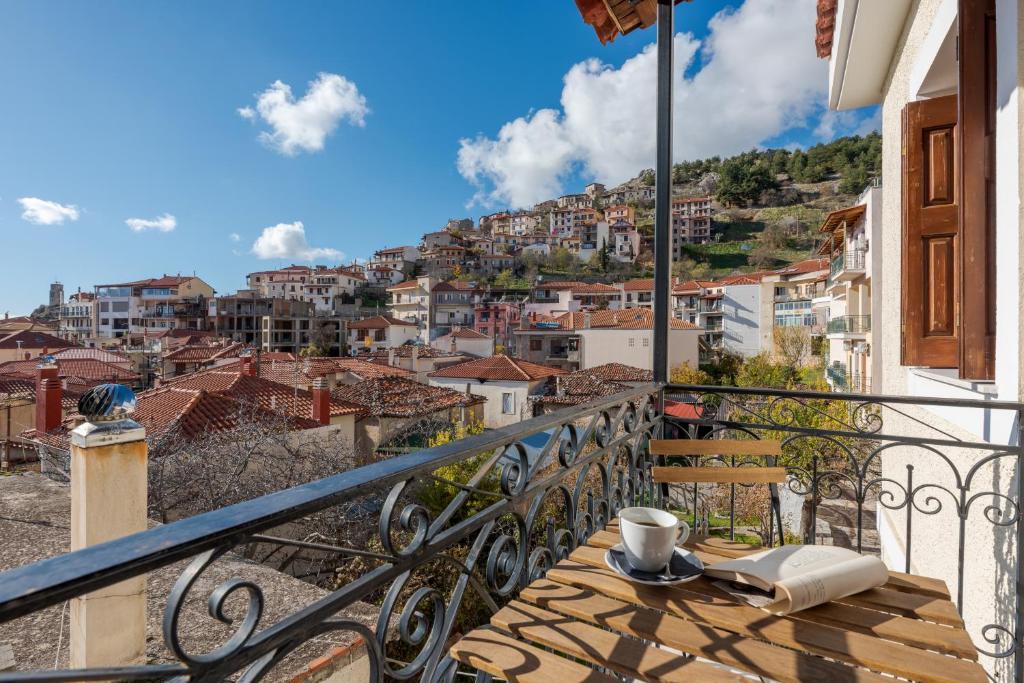
Paeonia in Arachova offers comfortable accommodations with a touch of local elegance. The rooms feature a mixture of traditional and modern decor and if you get one with a balcony you will love the picturesque views of the Parnassus and picturesque Arachova, perfect for enjoying a morning coffee or sunset. Delphi is about 10 km from Arachova.
Check out prices and availability for Paeonia Arachova in Booking and Expedia.
***
Arion Hotel, Delphi

Arion Hotel in Delphi offers a cozy stay with stunning views of the Million Olive Trees Valley and it is very close to the Delphi archaeological site. The rooms are comfortable and clean, perfect after exploring the ancient sites nearby. Don’t miss the delicious breakfast with local specialties. Overall, a great choice for a relaxing stay in Delphi!
Check out prices and availability in Booking and Expedia.
***
Hotel Kalafati, Itea
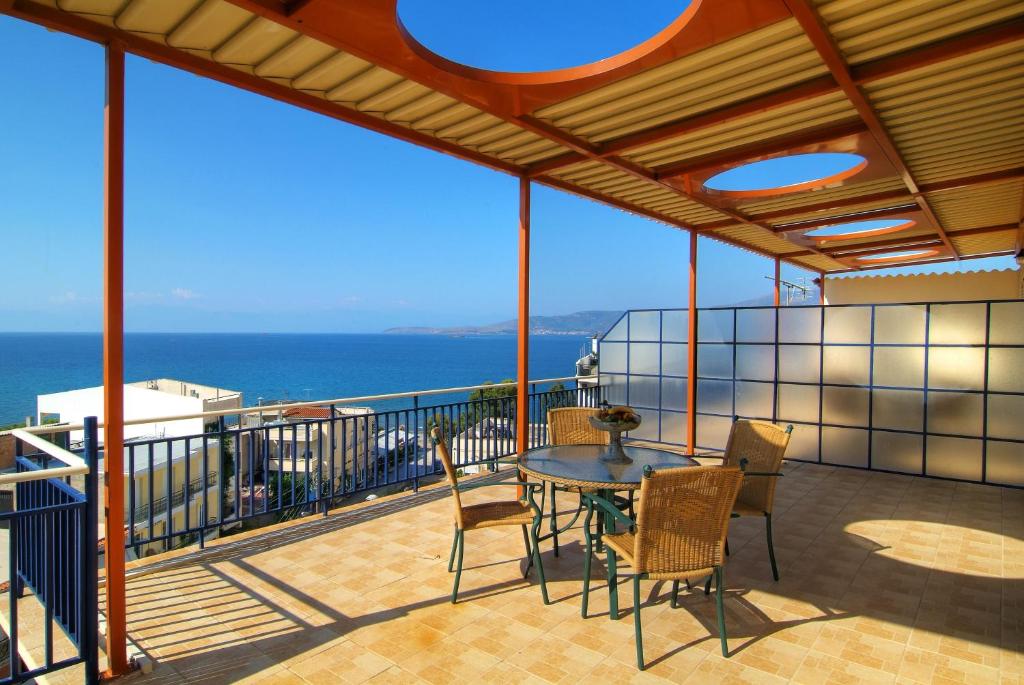
Hotel Kalafati in Itea offers beautiful sea views, making it a perfect getaway. The rooms are cozy and well-equipped, ensuring a comfortable stay. It is ideal if you would like to explore nearby sites and enjoy swimming and strolls by the sea.
Check out prices and availability in Booking and Expedia.
The Best Time to Visit
Anytime is good to visit the monastery, preferably not on a rainy or snowy day so that you can explore the place easier.
How to get to Hosios Loukas Monastery
The Monastery of Hosios Loukas is located 200 km away from Athens (approximately 2 hours by car). Take the national road towards Thessaloniki and take the exit to Parnassus, Arachova, and Delphi. Before reaching the town of Arachova, you will see road signs where to turn and head towards the villages of Distomo and Styri. Continue driving for about 9 km, and the road will lead you to Hosios Loukas Monastery.
Top Paleochristianic and Byzantine Monasteries in Greece
If you love exploring early Christian and Byzantine monuments then you should focus on these areas: Thessaloniki, Meteora, Mystras, Chios and Beotia.

- Thessaloniki Historical Churches: Holy Apostles, Saint Demetrius, Saint David, Panagia Acheiropoietos, Saint George (Rotunda), Hagia Sophia, Panagia ton Chalkeon, Monastery of Vlatadon.
- Meteora Monasteries: Great Meteoron, Saint Nicholas Anapafsas, Hosios Varlaam, Roussanou, Saint Stephen, Agia Triada (Holy Trinity).
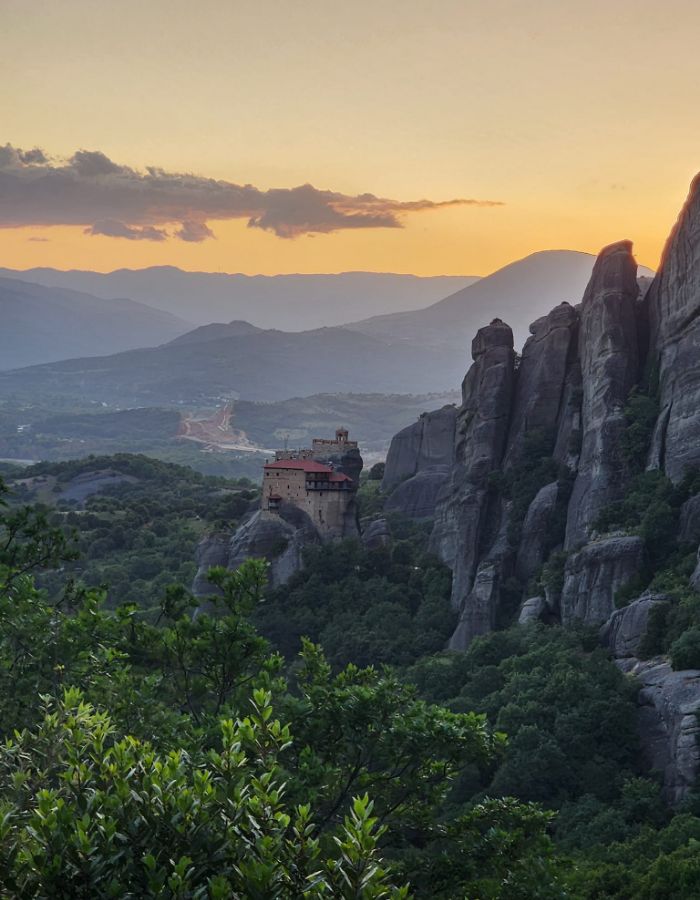
- UNESCO New Monastery of Chios Island (Karyes).
- UNESCO Monastery of Hosios Loukas, Boeotia (Stiri).
- UNESCO Monastery of Daphni, Athens.
- Mystras: Monastery of Brontochion(Lower Town), Church of Saint Demetrius, Church of Evangelistria, Monastery of Pantanassa, Monastery of Perivleptos, Church of Hagia Sophia.
Test Your Knowledge of Byzantine Art
- What is the primary architectural feature of Byzantine churches in Greece?
A. Minarets
B. Domes
C. Spires
D. Gargoyles
2. Which famous Byzantine monument in Thessaloniki is known for its mosaics depicting Christian themes?
A. Hagia Sophia
B. Rotunda of Galerius
C. Church of Panagia Ekatontapyliani
D. Monastery of Hosios Loukas
3. What type of art is most commonly found in Byzantine churches in Greece?
A. Frescoes
B. Sculptures
C. Oil paintings
D. Abstract art
4. Which Byzantine monastery complex in Greece is renowned for its location atop tall rock formations?
A. Mount Athos monasteries
B. Meteora monasteries
C. Monastery of Daphni
D. Monastery of Saint John the Theologian
5. What is the name of the architectural feature that crowns the central area of a Byzantine church and symbolizes heaven?
A. Narthex
B. Pendentive
C. Apse
D. Dome
Answers:
B. Domes
B. Rotunda of Galerius
A. Frescoes
B. Meteora monasteries
D. Dome
For more tips for the best itineraries, travel tips, and beautiful photos of Greece please join my Facebook Group, I would love to welcome you! Until then happy and safe travels, Evgenia 😀
Essential Travel Info for Greece
- ‘Hello’ and ‘Thank You’ in Greek: “Ya sou” and “Efharisto”
- Booking.com: I use Booking.com mostly for Europe.
- Expedia: I use Expedia for the rest of the world.
- All-Inclusive Resorts in Greece
- FerryScanner to book ferries to the Greek Islands
- Rent an Affordable Car in Greece
- Athens Metro Website (timetables and ticket info)
- Trains (Hellenic Train)
- Public Buses KTEL
- Get Your Guide: For all your day or multi-day tours and city guide needs, I use Get Your Guide
- Emergency Numbers Anywhere in Greece: AMBULANCE 166 – FIRE 199 – POLICE 100– EMERGENCY NUMBER 112
